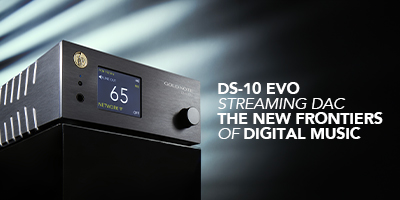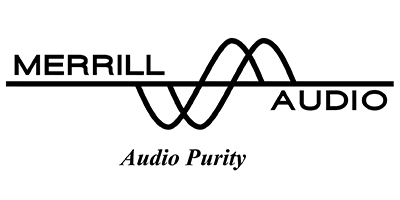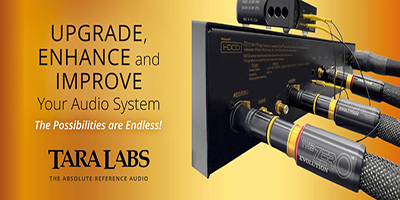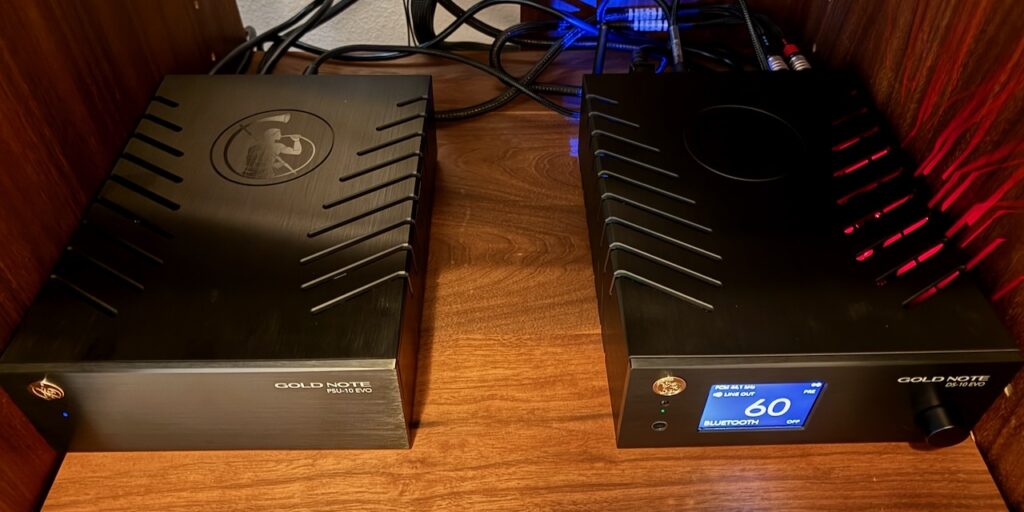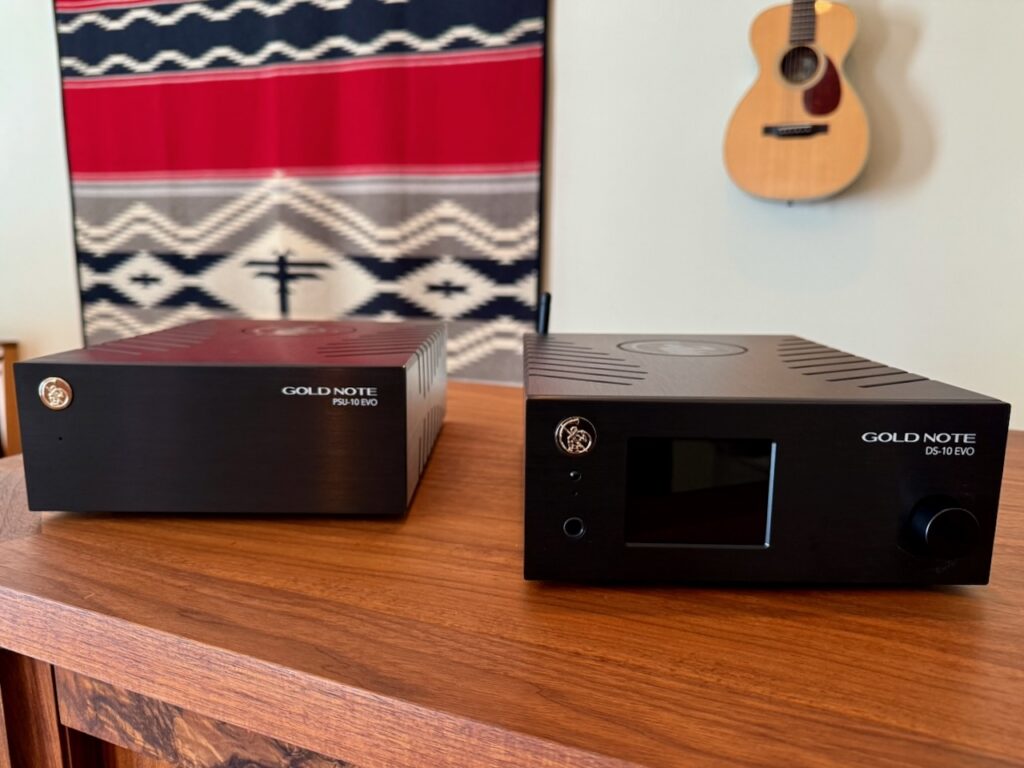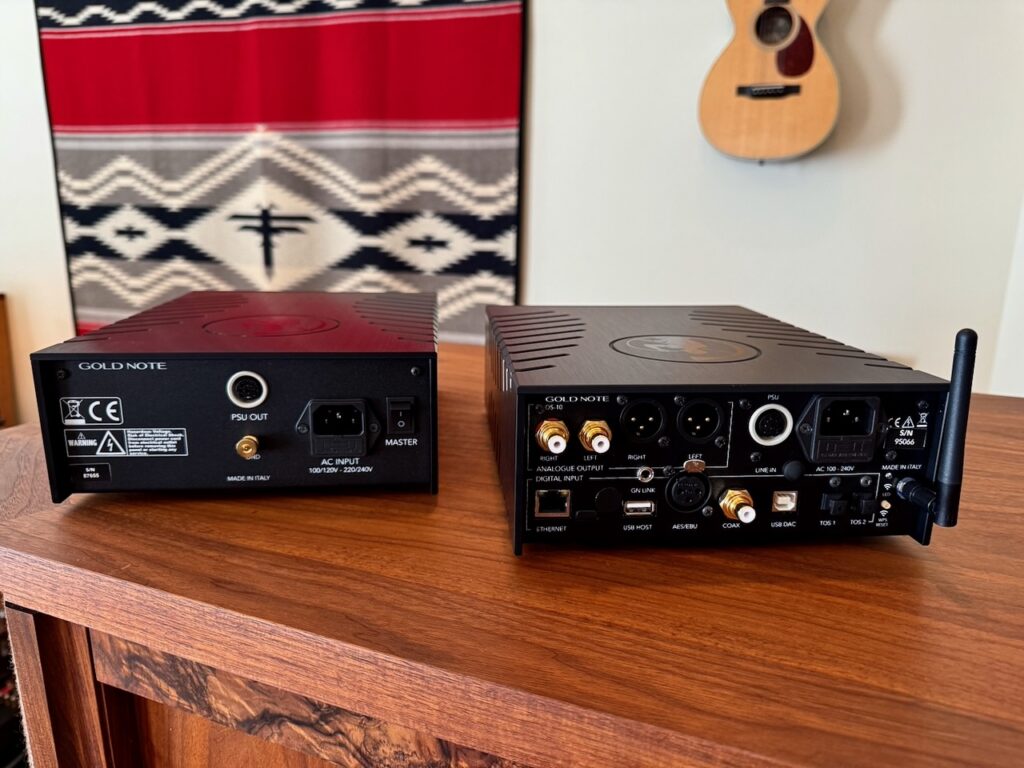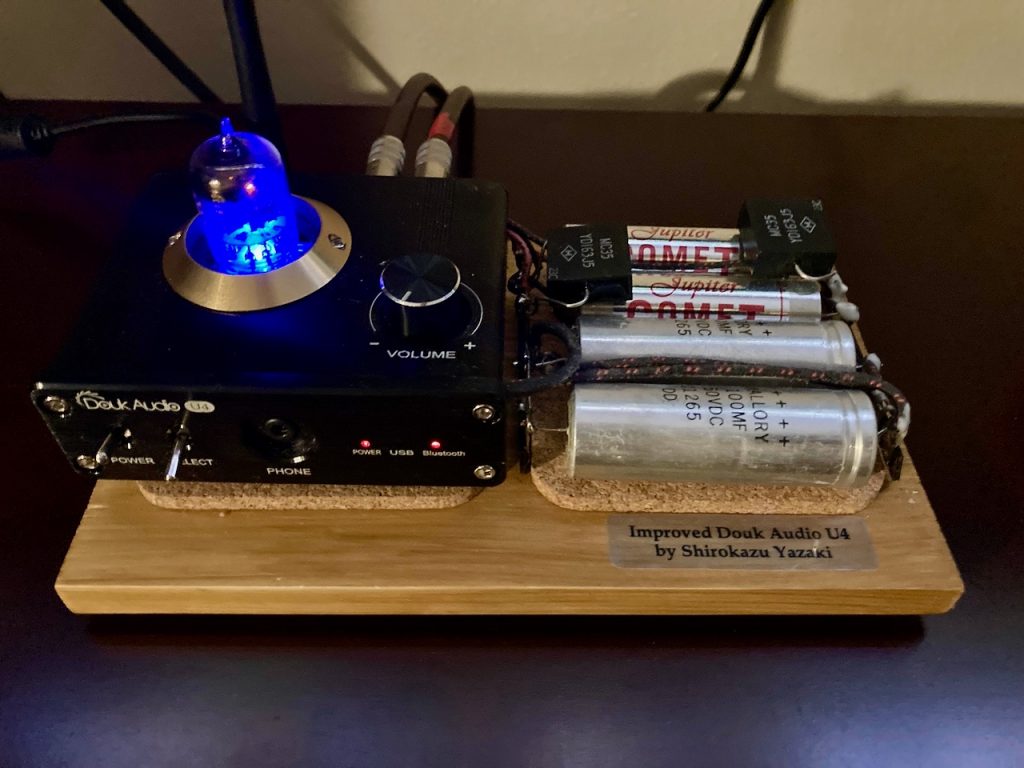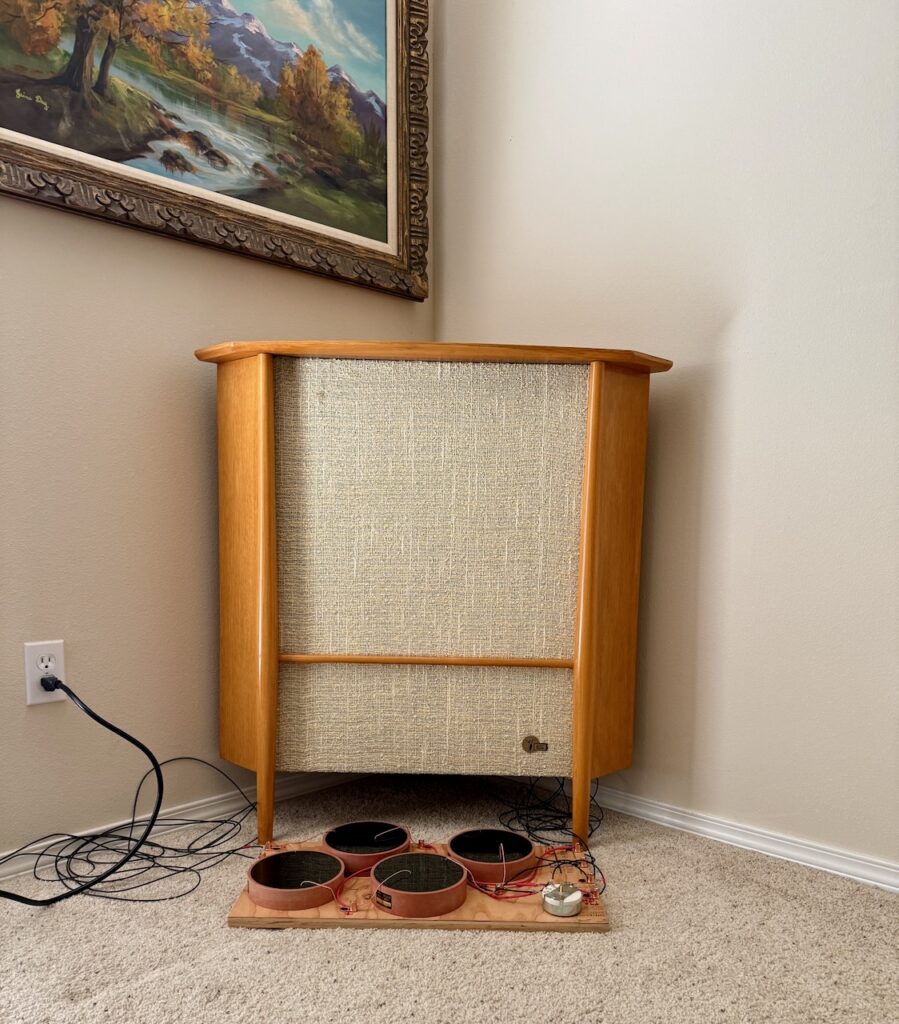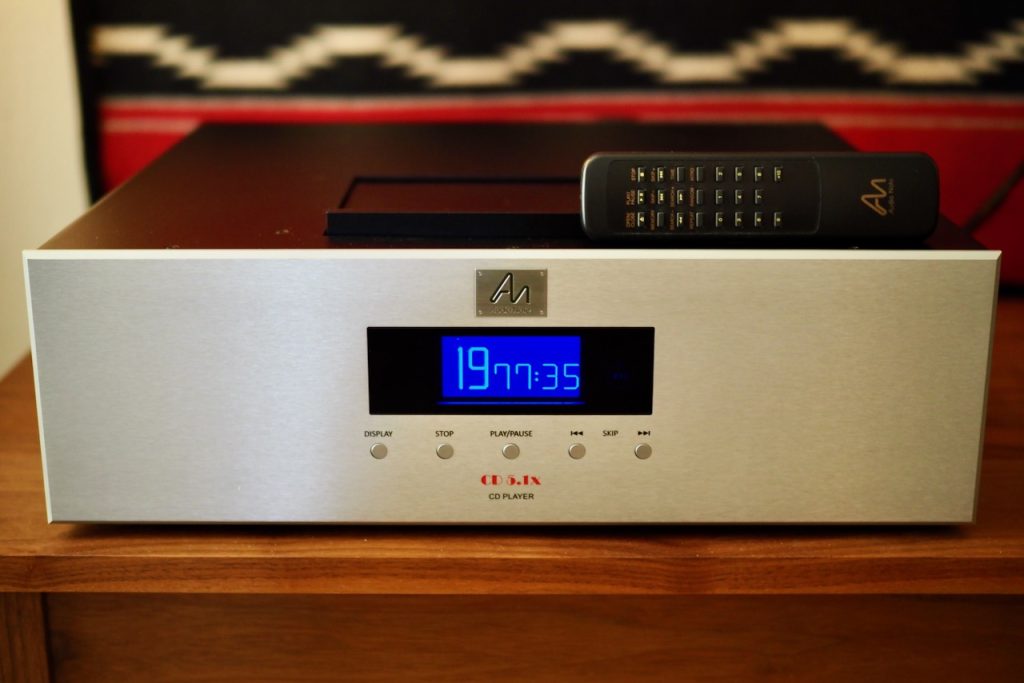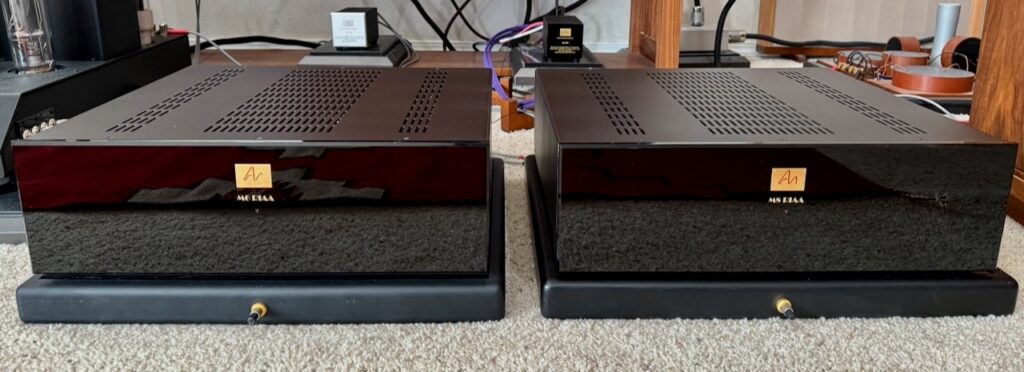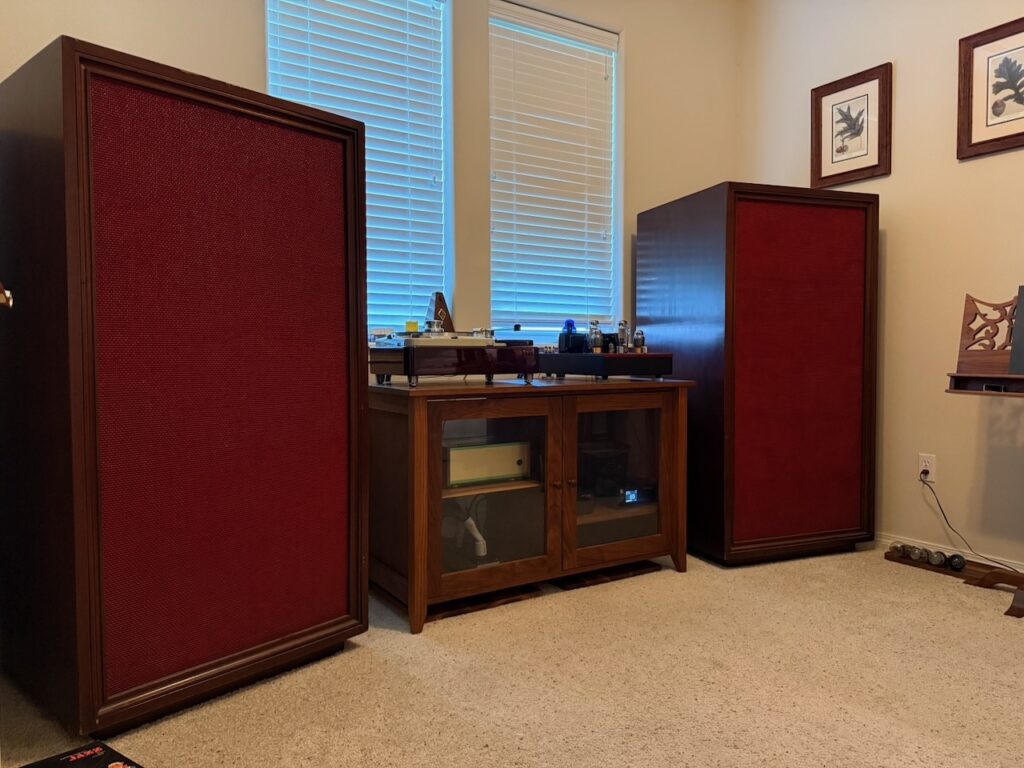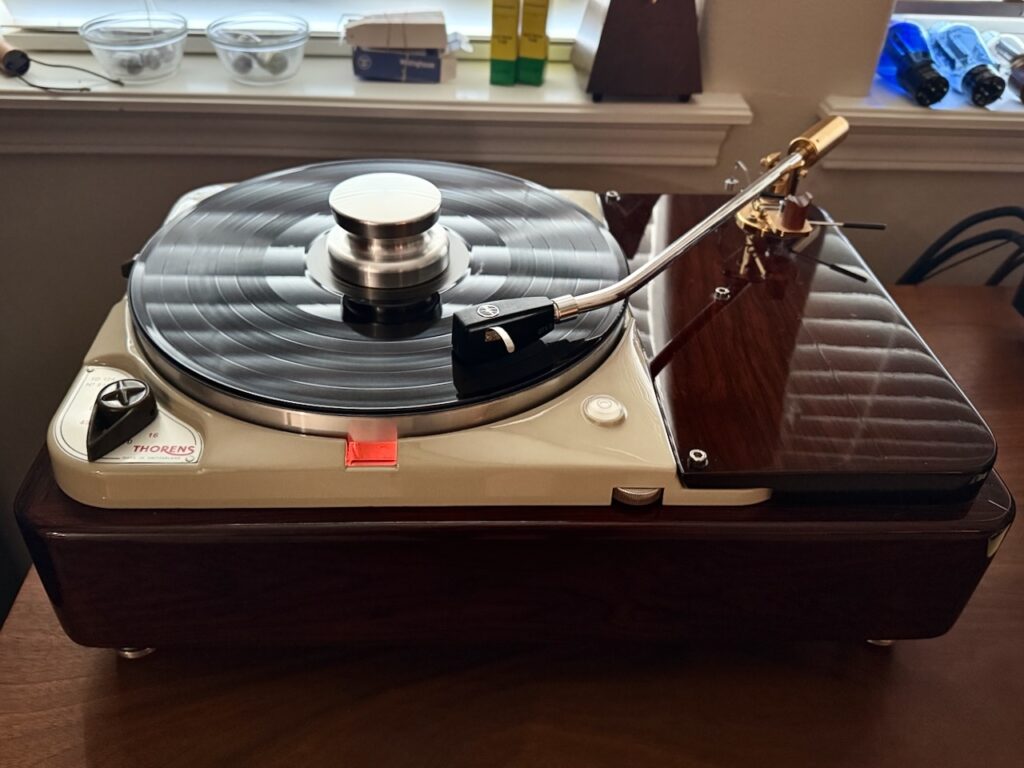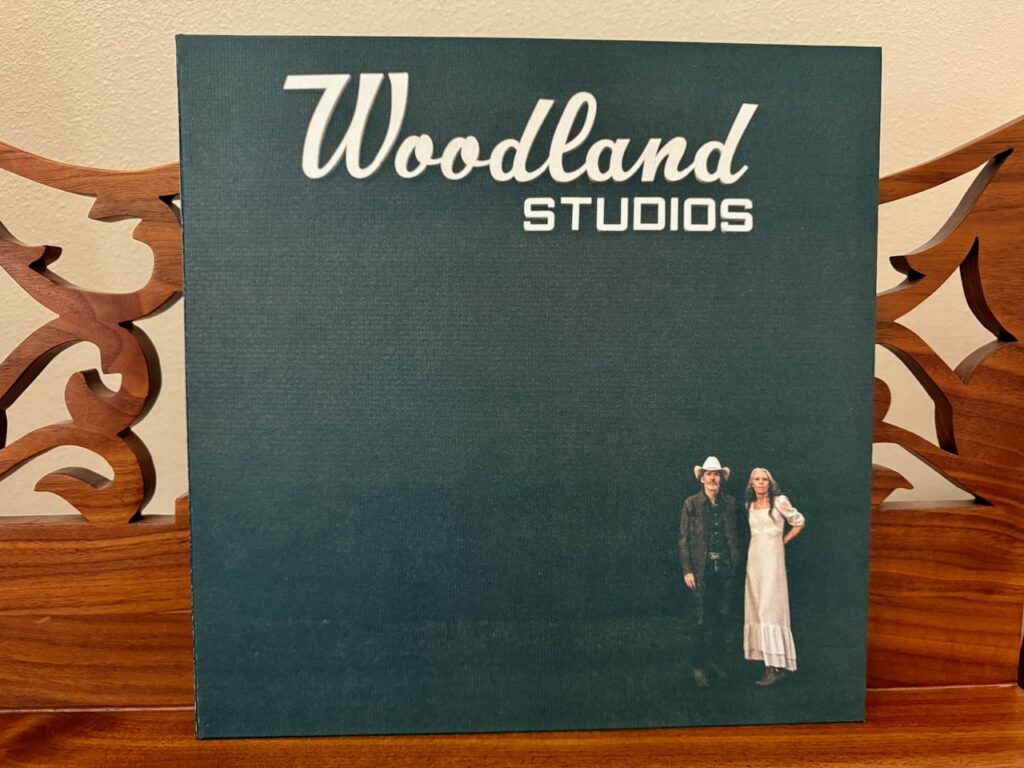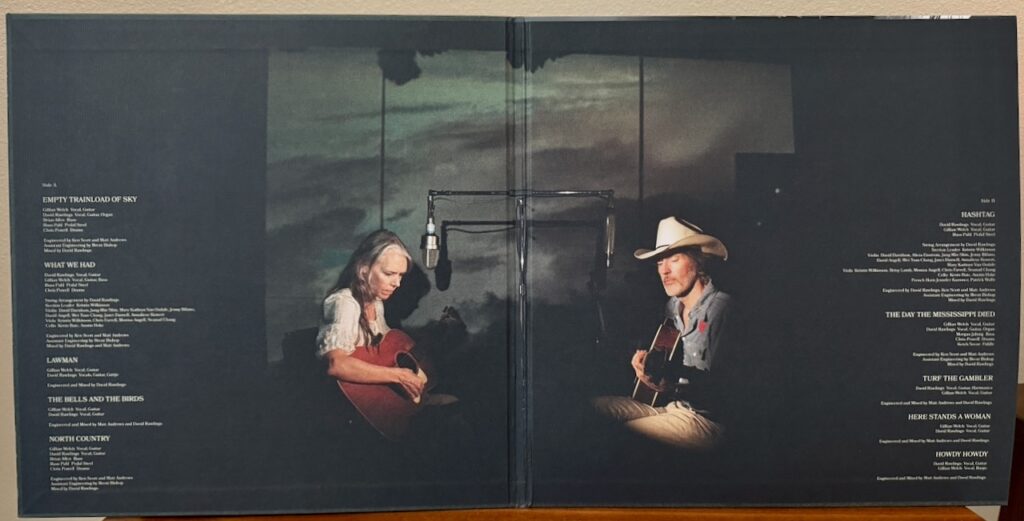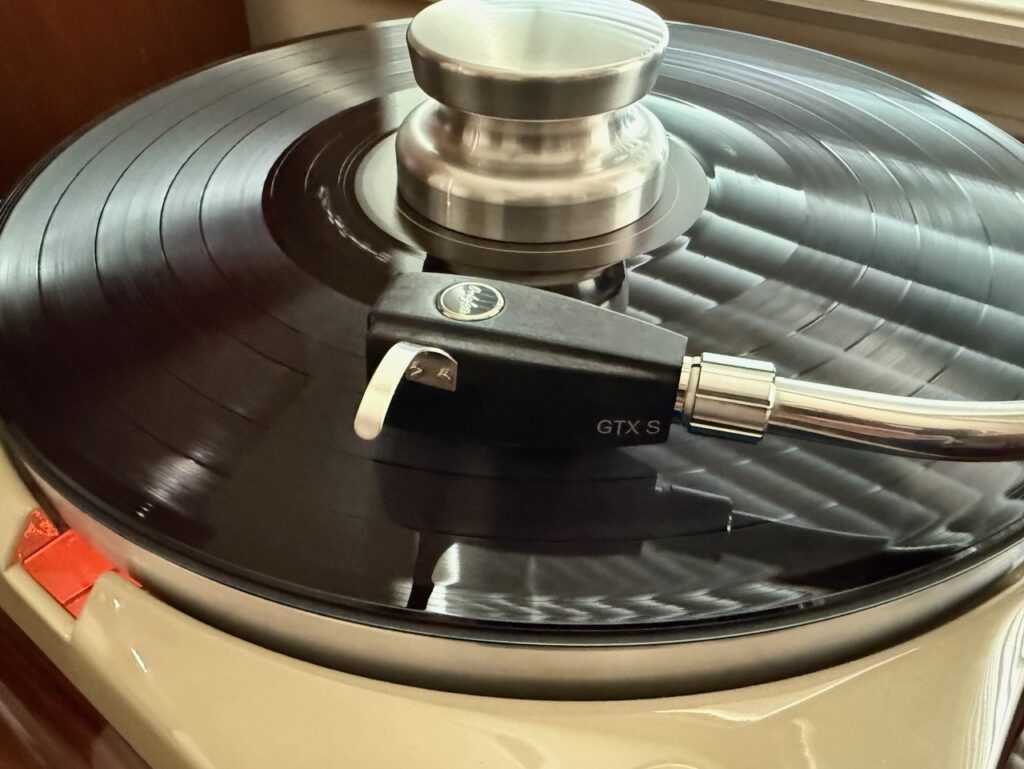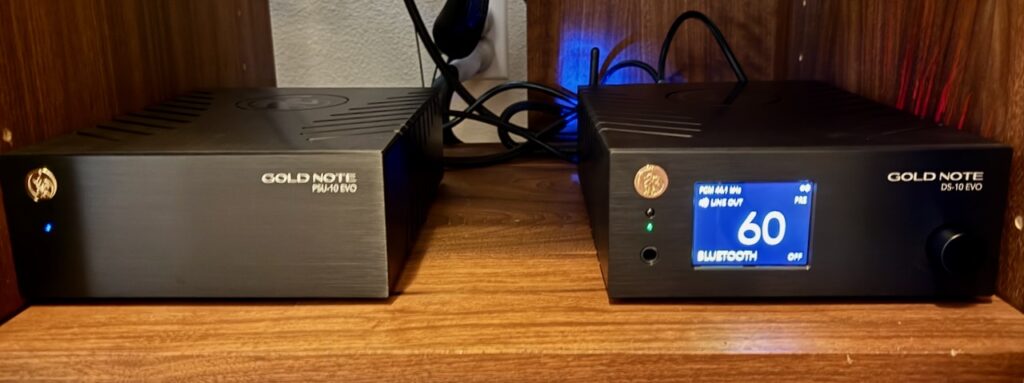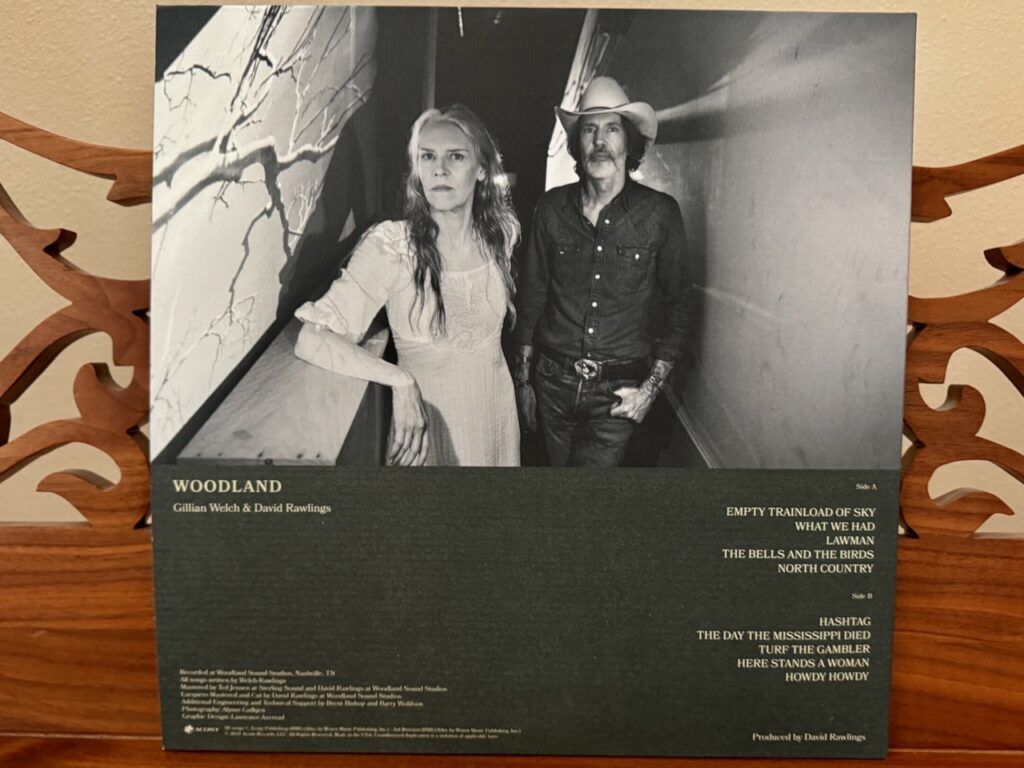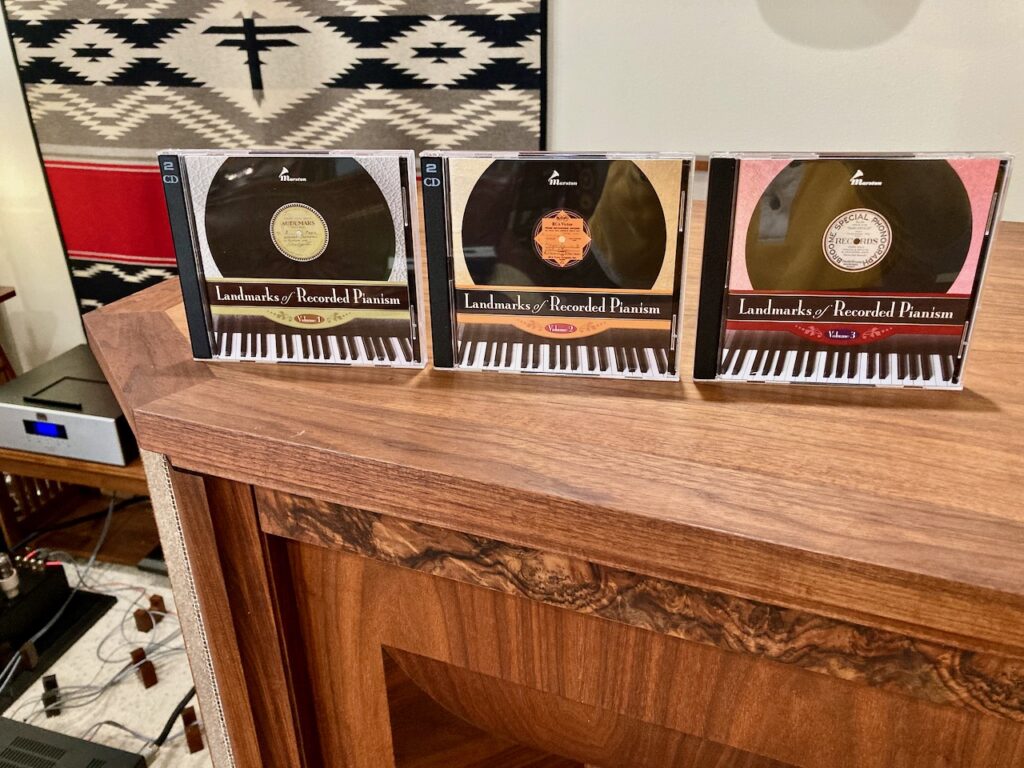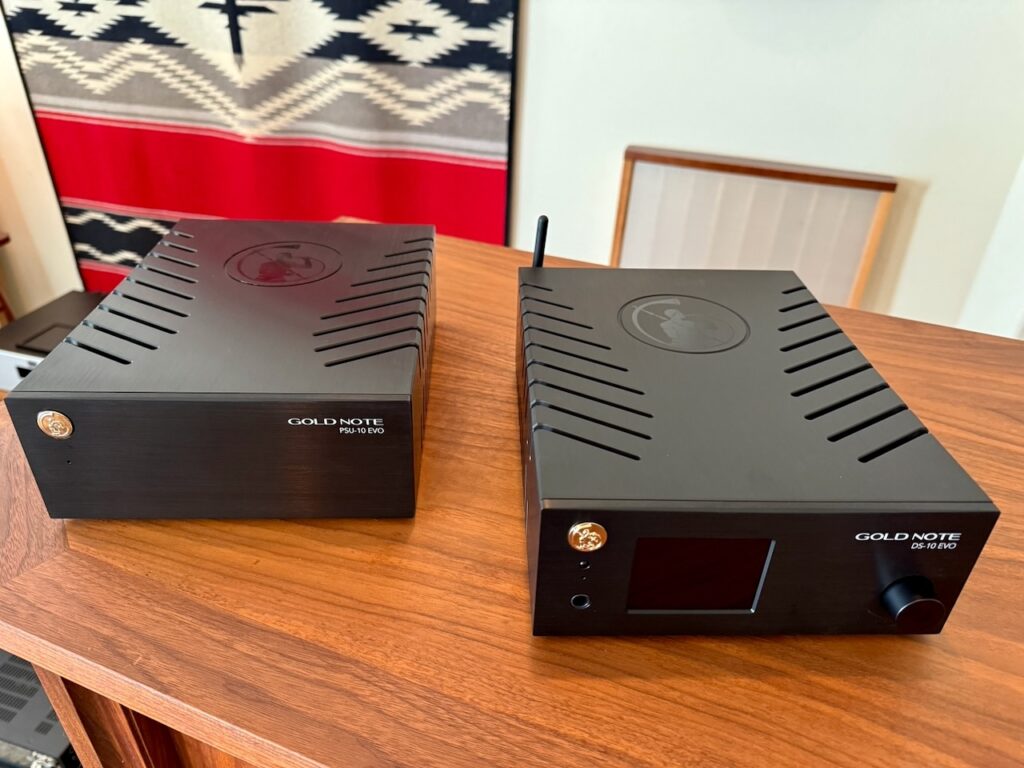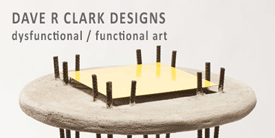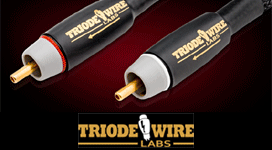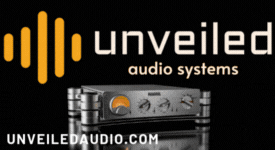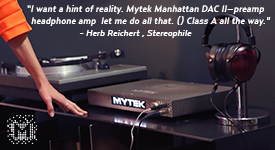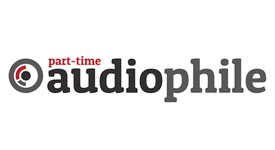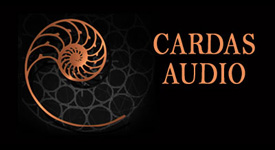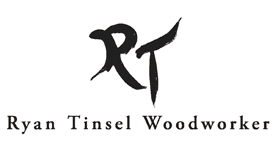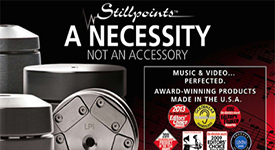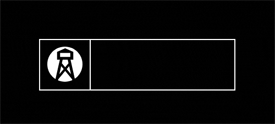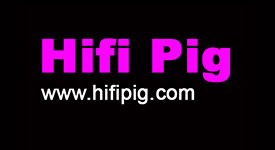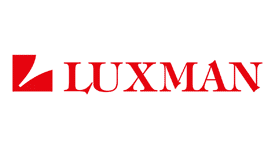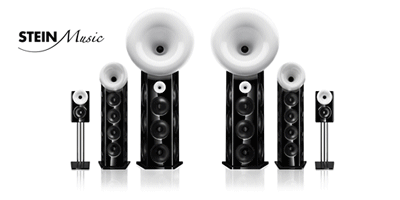Greetings friends, I hope you are well! 🙂
I’m progressing in learning about the performance capabilities of the Gold Note DS-10 EVO streaming DAC and PSU-10 EVO power supply in my vintage inspired office audio system.
Above: Gold Note DS-10 EVO power supply (left) and DS-10 EVO DAC (right).
As I continue to write about getting familiar with the Gold Note DS-10 EVO streaming DAC and PSU-10 EVO power supply combo in this series of articles, I’m starting from the position of exploring its capabilities as a new-to-streaming listener, much in the same context as you might experience it if you too were new to streaming digital media.
I want to give you a feel for what I experience as I ascend upwards through the Gold Note DS-10 EVO DAC & PSU-10 EVO combo’s resolution capabilities, starting with streaming at PCM 16 bit / 44.1 KHz resolution, PCM 24/96 resolution, PCM 24/192 resolution, PCM 32/384 resolution, DSD 256 resolution, and eventually, DSD 512 resolution.
Hopefully, by this approach, I’ll be creating a sort of “guide book” that will aid you when exploring high-performance streaming technology.
Above: Gold Note DS-10 EVO power supply (left) and DS-10 EVO DAC (right).
If you haven't yet read it, I recommend you also read my, Today's Fresh Catch: The Gold Note DS-10 EVO streaming DAC & PSU-10 EVO power supply! article HERE, where I describe my initial setup and streaming of Jazz24 and Operavore via my iPhone 16 Pro Max.
Above: Gold Note DS-10 EVO power supply (left) and DS-10 EVO DAC (right).
Actually, I’m not completely new to the world of streaming, as I’ve been streaming Jazz24 and Operavore - PCM 16/44.1 - for a while through Yazaki-san’s hot-rodded Douk Audio U4 Bluetooth vacuum tube DAC.
Above: Yazaki-san's hot-rodded Douk Audio U4 Bluetooth DAC.
At least I think the U4 is streaming at PCM 16/44.1 resolution, as it doesn’t indicate the resolution on the DAC. However, when streaming Jazz24 and Operavore via Bluetooth on the Gold Note DS-10 EVO DAC, it identifies their streams as PCM 16/44.1, so I’m guessing it is the same for the U4.
I haven’t compared the Gold Note DS-10 EVO directly to the hot-rodded U4 via Bluetooth streaming at PCM 16/44.1 resolution in any sort of detailed fashion, other than to note that they did sound very different from each other in casual listening. For now, Yazaki-san’s hot-rodded U4 DAC is residing in my Duelund-Corona 832A Project based audio system, where it is contributing to bedding-in time for the Coronas’ breadboard Duelund CAST copper crossovers.
Above: Vintage Altec Corona 832A loudspeaker with Duelund CAST copper breadboard crossover.
Above: Audio Note (UK) CD 5.1x CD player.
16/44.1 PCM is what the Red Book CD standard is, and I have found that it can sound quite good, and even very good with top performing Red Book CD players like the Audio Note (UK) CD 5.1x, which compares favorably in fidelity when playing CDs to good turntable / tonearm / cartridge / SUT / phono preamp combinations playing LPs.
Above: M6 RIAA (left), M8 RIAA (right).
I’ve also found that when going from very good phono preamps to great phono preamps, like the Audio Note (UK) M6 or M8 RIAA, that LP playback quality with the highest fidelity recordings is considerably higher than with the same albums on CD.
The positive I’ve found with PCM 16/44.1 via Bluetooth free streaming channels like Jazz24 and Operavore is that it opens up a lot of music listening that I might not otherwise experience, if I had only been buying albums as CDs or LPs. That extra music listening ability is a good thing in my opinion.
I look at the free Bluetooth streaming channels as the 21st Century’s answer to FM radio channels, but a head-to-head fidelity comparison of those two is not something I’ve done.
My impression from listening to both mediums at different times in my audio journey is that the highest-fidelity FM radio channels can sound better than the free Bluetooth streaming channels when you have high-quality FM equipment like that from Magnum Dynalab, or others, for playback.
Above: My vintage-inspired audio system with classic Thorens TD-124 turntable, SET amplification, and high-sensitivity custom vintage Altec loudspeakers.
Streaming PCM 16/44.1 via Bluetooth through the Gold Note DS-10 EVO streaming DAC and PSU-10 EVO power supply combo in my vintage inspired office audio system has provided some interesting insights into streaming performance.
Above: Vintage Thorens TD-124 with the new Ortofon SPU GTX S moving-coil cartridge with built-in SUT.
My restored Thorens TD-124 turntable / Schick tonearm / Ortofon SPU GTX S cartridge / Leben RS-30EQ phono stage combination is a very nice sounding source for playing LPs, and it really excels at allowing me to feel the expressive intent of the musicians through their music.
Comparing Bluetooth streaming at PCM 16/44.1 resolution of Woodland, by Gillian Welch & David Rawlings, through the Gold Note DS-10 EVO DAC & PSU-10 EVO to that of the LP played via my Thorens turntable, revealed that while the 16/44.1 Bluetooth stream was enjoyable and musical, it didn’t come close to the sound quality and level of musical engagement offered by the LP.
As you will read about in a moment, that LP vs. PCM 16/44.1 result was not a statement about the ultimate performance of the Gold Note DS-10 EVO DAC & PSU-10 EVO’s level of performance, but simply about the limitations of the PCM 16/44.1 resolution versus LPs higher fidelity potential when played back on a good vinyl front end.
I’ve also subscribed to the paid streaming channels of Amazon Music Unlimited and Qobuz (both are $10.99 a month after their free trial periods), so that I might tell you about my experiences exploring streaming at the higher data rates they offer (up to 24/192).
I didn't really know what to expect, but when playing back Woodland at PCM 24/192 resolution on the Qobuz app on my iPhone 16 Pro Max, and comparing it to the LP, I found overall fidelity was fairly close between the two. That's good performance!
That result was with the Gold Note DS-10 EVO DAC in “network” mode (Wi-Fi), using my Ziply Fiber 300 Mbps upload/download speed, and with the “Chameleon mode” of the DS-10’s DAC set to “Sharp Roll-Off (traditional sound)” as specified by the “descriptions provided by AKM for the chipset AK4493”.
A word about the DS-10 EVO DAC’s “Chameleon mode” from the owner’s manual: “The Chameleon mode is a special feature designed to let you fine-tune the behaviour of the DAC. Acting on three parameters, you can test 48 different setups, adapting the DS-10 EVO to your music and stereo system with the highest degree of customisation. These parameters are Equalisation Curve, De-emphasis Curve and DSD filter - and your choices are stored into the memory of the DS-10 EVO using the presets.”
I have only begun to experiment with the Chameleon mode of the DS-10 EVO DAC, so I’ll update you as I go and get more experience with it.
I experimented with the settings for PCM, and found when the DS-10 EVO DAC was set to “sharp roll-off / traditional sound,” the overall tonal balance was very similar to that of my Ortofon SPU GTX S phonograph cartridge.
That is very high praise indeed for the DS-10 EVO DAC, as I absolutely fell in love with the SPU GTX’s performance in my vintage inspired system.
Above: Ortofon SPU GTX S phonograph cartridge.
Careful listening to the LP vs. the Qobuz 24/192 resolution version of Woodland, I found the sound quality to be very close between the two, but with the LP having slightly more tactile presence, dynamic contrast, overall resolution, etc., than PCM 24/192.
While my Leben RS-30EQ vacuum tube phono equalizer is very good, a higher performing phono equalizer like the Audio Note (UK) M6 or M8 RIAA, the performance of the vinyl playback would be considerably higher.
As a side note, when trying to stream Woodland at a higher resolution on Amazon Music Unlimited, my iPhone 16 Pro Max would not stream the higher resolution, instead defaulting to 16/44.1 resolution. Not sure what is up with that, but I ordered a USB-C to USB-B cable so I could connect my iPhone directly to the DS-10 EVO DAC’s USB-B input, which can support resolutions up to DSD 512, the highest resolution that the DS-10 EVO DAC is capable of.
I’ll report back when I’ve tried that approach. My first impression of Amazon Music Unlimited is rather poor. While there is an abundance of music to explore, I have not found a way to find all the “Ultra HD” albums listed in one place. Essentially you have to look at every single album and then try playing it to find out if it has a higher-resolution version available, which is a nuisance compared to the easy to use interface of Qobuz. Given that, I’ll probably cancel my Amazon Music Unlimited subscription in favor of Qobuz.
I’m continuing to explore the ascending performance potential of higher resolution digital formats, and I’ve sent Positive Feedback Editor In Chief, Doc David, a Samsung T7 2TB external solid state drive that he is going to load with a “sampler” of higher resolution digital formats, all the way up to master tape / quad DSD quality.
I’ll report back on that after it arrives and I do some more listening.
My take so far on the Gold Note DS-10 EVO streaming DAC and PSU-10 EVO power supply combo is that it is a very high-quality streaming DAC that I can use to listen to free Bluetooth streaming at 16/44.1 from channels like Jazz24 or Operavore, and others, which allows me to listen to and explore a wide variety of music at no cost for subscriptions. I like that.
While the fidelity of PCM 16/44.1 Bluetooth streaming is well below that of playing LPs on my Thorens TD-124 with the Ortofon SPU GTX S cartridge, but taken on its own merits, the friendly, warm, and engaging PCM 16/44.1 Bluetooth stream through the DS-10 EVO DAC & PSU-10 EVO combo is still very enjoyable to listen to. I like it.
When going to higher resolution PCM 24/192 “Network” streaming over Wi-Fi, I found the Gold Note DS-10 EVO DAC set to “sharp roll-off / traditional sound,” was very nearly a match to LPs played through my Ortofon SPU GTX S phonograph cartridge, which I consider to be an altogether good result. Consider me impressed by that.
While sound quality at PCM 24/192 resolution was very nearly equal to LPs, I still thought the LPs had a slight fidelity advantage, and I preferred the LPs greater ability to allow me to feel the expressive intent of the musicians through their music.
Can streaming high-resolution PCM 24/192 files from providers like Qobuz replace listening to LPs for me?
No, I think LPs perform at a higher level of fidelity than PCM 24/192 offers, particularly with the very best vinyl playback kit.
Would I buy PCM 24/192 file downloads of albums that are currently available from high-resolutions digital providers like Qobuz?
Probably not, as I’d rather buy the LPs with their enticing cover art, album descriptions, liner notes, and higher level of sound quality and musical engagement.
I like having my albums in my hands rather than stored on a hard drive.
Above: Volumes 1, 2, and 3 of Landmarks of Recorded Pianism on CD. Marston Records.
Is there anything that could tempt me to buy PCM 24/192 file downloads of albums?
Not currently, but the answer could be “yes” if Qobuz offered high-resolution downloads of historic performances from speciality providers like Marston Records.
Above: Acoustic era recordings transferred to digital by Ward Marston for Naxos.
Higher resolution files of the great performances from the acoustic, electrical, and early monaural magnetic era of the recording arts would be of great interest to me.
One thing that could entice me to buy high-resolution PCM 24/192 digital albums, or above, would be if they were offered on a flash drive that I could plug directly into the Gold Note DS-10 EVO DAC (or to download from the flash drive to an archival hard drive), and packaged with an LP sized jacket that includes all of LPs desirable liner notes, artwork, photography, etc.
My take for now is that Gold Note DS-10 EVO DAC & PSU-10 EVO power supply combo is a great addition to an audio system, not based on its PCM streaming performance, but that it opens up a whole new world of music listening that I might not otherwise experience.
However, the ultimate test of the Gold Note DS-10 EVO streaming DAC and PSU-10 EVO power supply combo is still coming, when I listen to DSD 256 & 512 resolution transfers from master tapes.
Will that change my mind about the listening potential of high-resolution digital?
Stay tuned, much more to come!
Thanks to Positive Feedback's Doc David and Gold Note's Tom Dolfi for making it possible for me to to do this series of articles for you about the Gold Note DS-10 EVO streaming DAC & PSU-10 EVO hot-rod power supply combo.
As always, thanks for stopping by, and may the tone be with you!
Previous Articles In This Series
Today's Fresh Catch: The Gold Note DS-10 EVO streaming DAC & PSU-10 EVO power supply! HERE

